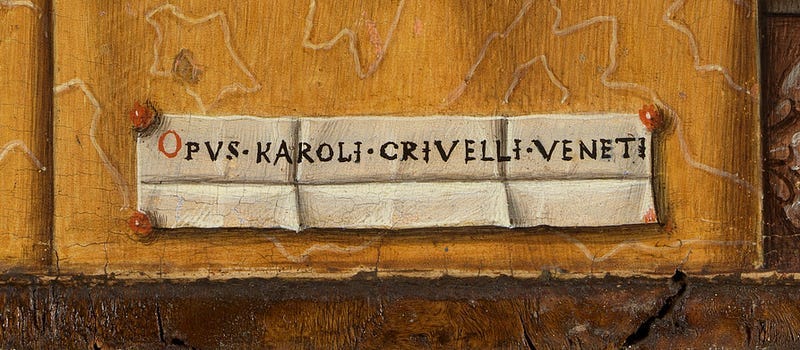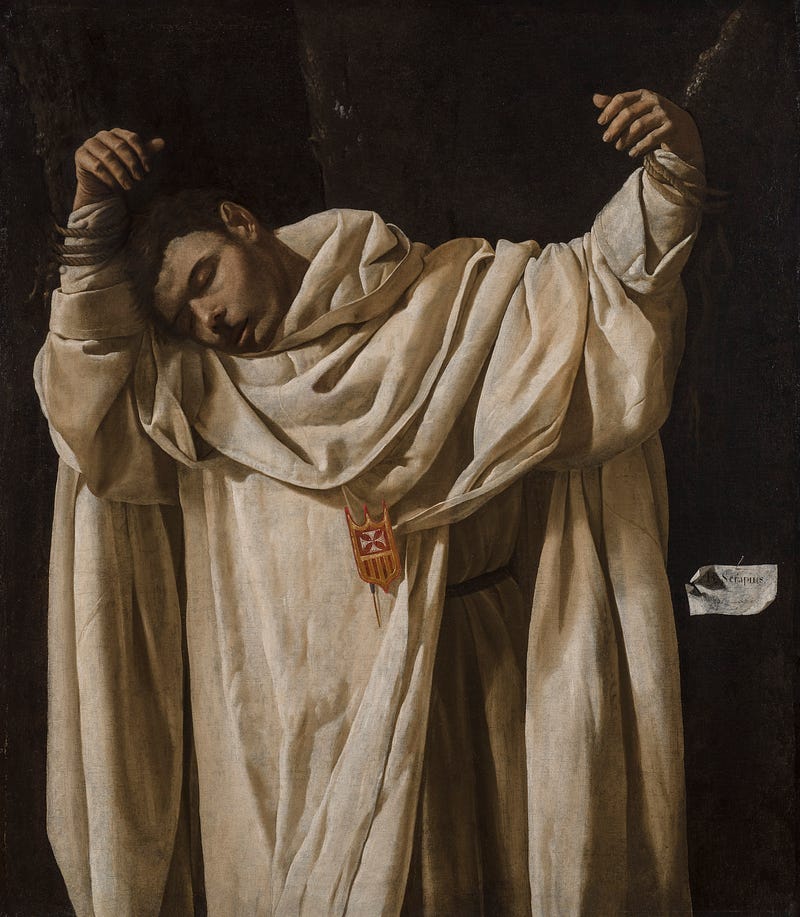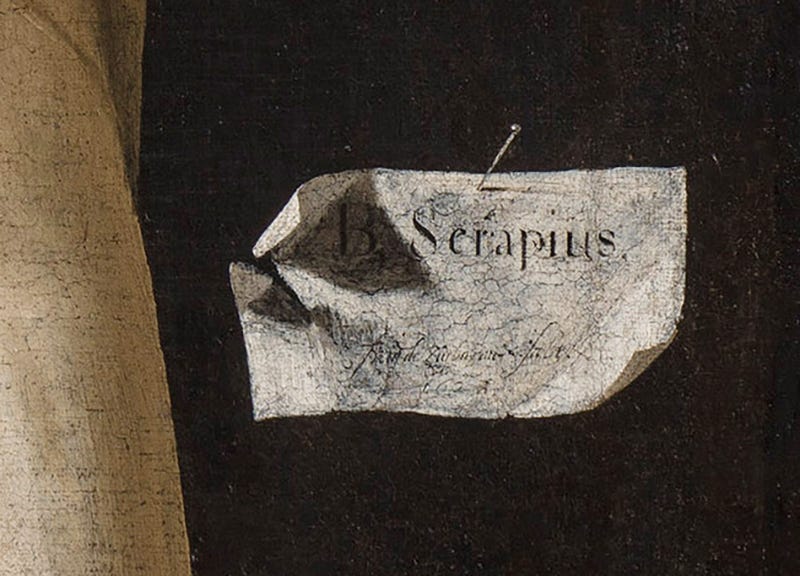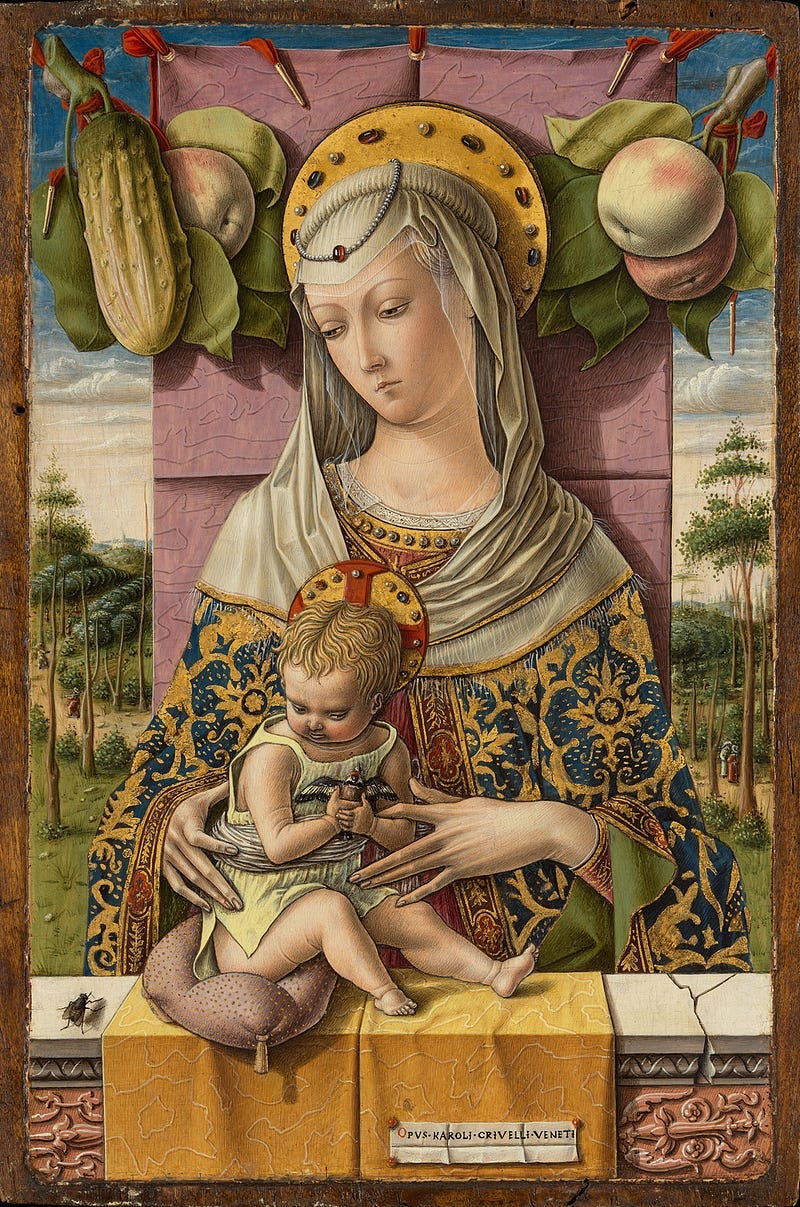3 Art Terms to Deepen Your Understanding of Paintings
Sharpen your appreciation of art with these expressions

Dear Reader,
It was rare for an artisan from the Medieval era to sign their work, but this changed during the early years of the Renaissance. Artists began to be sought after by name. Reputations were valued. And so artists’ signatures became an all-important feature of paintings.
Unsurprisingly, artists seized this opportunity to showcase their ingenuity, resulting in the development of various innovative techniques to incorporate their names into their works. One of these ways involved what art historians call cartellini.
A cartellino (singular of cartellini) is a piece of paper or parchment painted illusionistically. Through the use of shadow and light-play, the piece of paper could look as though it were physically affixed onto the picture canvas or attached to a wall represented in a painting.

Take this work of, The Martyrdom of Saint Serapion, by the Spanish artist Francisco de Zurbarán, made in 1628.
It shows — in descriptive detail — the 12th-century friar St Serapion suspended between tree trunks, his arms bound up by ropes after having been captured by English pirates.

To the right of the dying saint is a cartellino. It is inscribed with the name of the subject and dated with the artist’s signature, and appears to be tacked to the surface of the canvas with a metal pin. Brilliantly painted shadows and highlights give the impression of three-dimensionality, right down to the dot of light on the head of the pin. Meanwhile, the paper’s torn and crumpled appearance makes it look as if it is about to fall away, suggestive of ephemerality and death — and therefore echoing the transience of the saint’s earthly life.

As the Zurbarán example perhaps suggests, another purpose of cartellini was to provide a moment of illusionistic realism in the painting, thereby prompting the viewer to consider reaching out and touching it . To do so, even notionally, would be to cross the threshold between the viewer’s reality and the reality of the image.
In this vivid painting by the Venetian artist Carlo Crivelli, which shows Mary and the Christ Child, the artist has added a distinct cartellino tacked to the yellow fabric that overhangs the wall. Painted shadows give the appearance of folds in the paper, as if the artist has opened up the cartellino and attached it to the parapet with daubs of red wax.

The slip of paper reads: OPVS.KAROLI.CRIVELLI.VENETI (“Work of Karoli Crivelli, Venice”).
Notice how the Christ Child looks towards Crivelli’s signature on the cartellino, providing an example of what the art historian Amanda Hilliam describes as “the transgressive gaze”.
In other words, the cartellino exists in a layer of reality that is accessible to both the audience and the figures in the painting, “drawing the viewer one step closer to the heavenly realm.”
Keep reading with a 7-day free trial
Subscribe to Discover Art History - Christopher P Jones to keep reading this post and get 7 days of free access to the full post archives.

